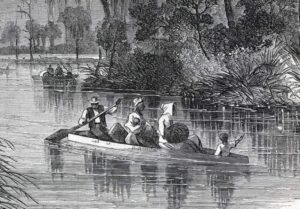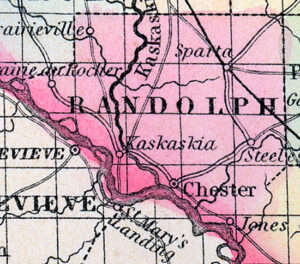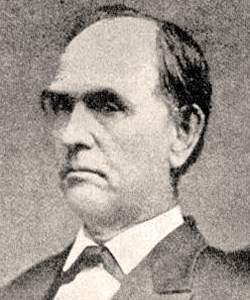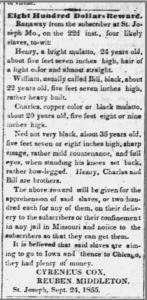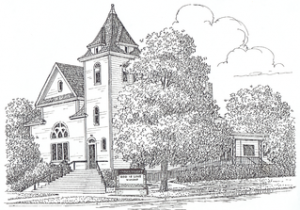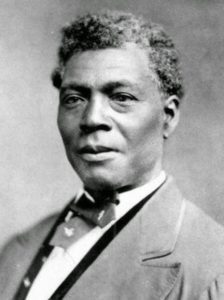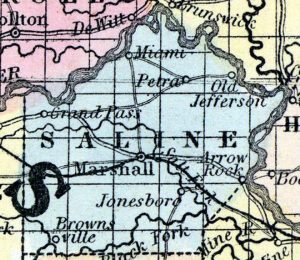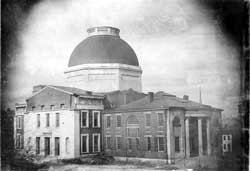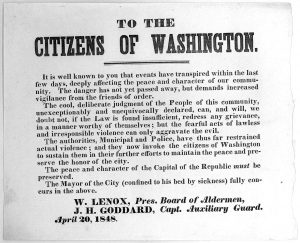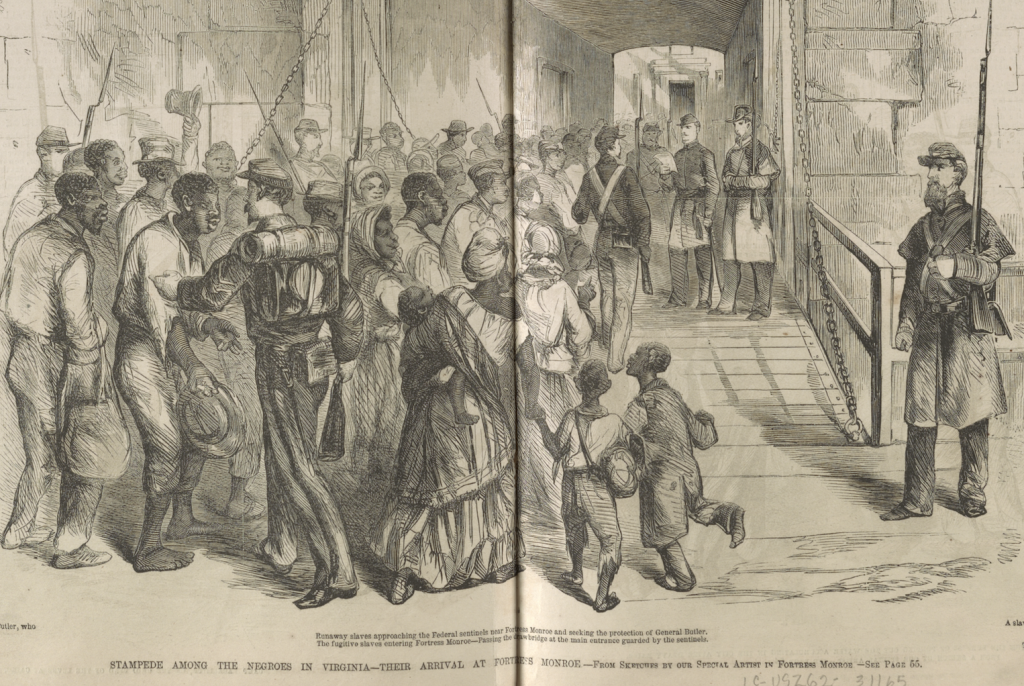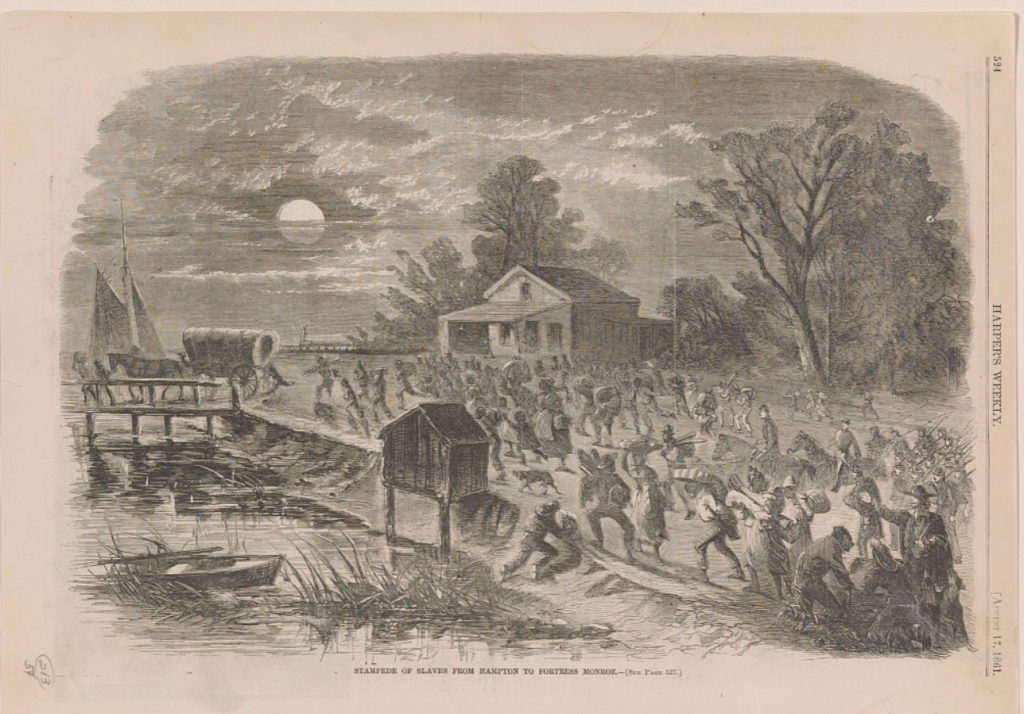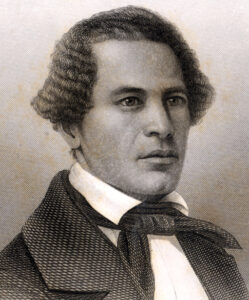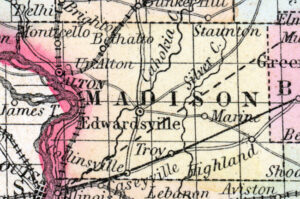Christensen, Lawrence O. “Black Education in Civil War St. Louis.” Missouri Historical Review 95, no. 3 (April 2001): 302-16. [WEB]
Fellman, Michael. “Emancipation in Missouri.” Missouri Historical Review 83 (Oct. 1988): 36-56 [JSTOR], [WEB].
Frizzell, Robert W. “Southern Identity in Nineteenth-Century Missouri: Little Dixie’s Slave-Majority Areas and the Transition to Midwestern Farming.” Missouri Historical Review 99 (April 2005): 238-260. [WEB]
Lee, George R. “Slavery and Emancipation in Lewis County, Missouri.” Missouri Historical Review 65, no. 3 (April 1971): 294-317. [WEB]
Naglich, Dennis. “The Slave System and the Civil War in Rural Prairieville.” Missouri Historical Review 87 (April 1993): 253-73. [WEB]
Strickland, Arvarh E. “The University of Missouri—Columbia History Department: Training Scholars in the Black Experience.” Missouri Historical Review 95 (July 2001): 413-430. [WEB]
Christensen, Lawrence O. “Black Education in Civil War St. Louis.” Missouri Historical Review 95, no. 3 (April 2001): 302-16. [WEB]
Black education after the Civil War was a struggle for all those involved. The key providers were the Western Sanitary Commission, the American Missionary Association (AMA), Catholic Churches and subscription teachers.
The AMA and the Western Sanitary Commission were providing free schools by hiring teachers and providing resources. In an effort to provide maximum help and streamline resources, the Western Sanitary Commission, the AMA and other black ministers came together to form a temporary board in 1863. Missouri did not lift its ban on African American education until 1865; the board was supposed to be the interim substitute until the Missouri State Assembly created something concrete. But with all this consolidation, the new board suffered financially and had to temporally close its doors in February and March in 1865. Fortunately, they received aid from the state that allowed them to start up again by the end of the year. But they continued to struggle. The first problem was that attendance was not constant. Some children were so poor that they could not come to school because they lacked proper clothing and shoes for the winter. Another problem that discouraged parents was its inability to hire a black teacher or superintendent.
Subscription offered the representation that parents craved. One of them was notably run by Hiram R. Revels, an ordained African Methodist Episcopal minister who later became a Mississippi senator in 1870. He was joined by three women, Jospehine Bailey, Virginia Green and Georgia L. Buckner, and they operated alongside the free schools run by the board. They were partly kept alive because of the well-to-do black population that existed and their preference for a black educator.
Before these efforts, education of African Americans was not an uncommon sentiment, especially in a time when it was heavily discouraged. John Berry Meachum, a black minister, organized a school in his basement in the late 1820s and in 1845, St. Louis Catholics had school for black girls. Then there was a state law in 1847 that prevented the education of African Americans. Even then, the Sisters of Mercy opened a school in 1856 which also eventually closed. A decade later, the opposition to education was very much the same, even from Union members and abolitionists. White AMA teachers described St. Louis “as a hostile work environment” and teachers were forced to teach and work in horrible conditions.
There was no mention of a stampede or any variant, or any group escapes.
Fellman, Michael. “Emancipation in Missouri.” Missouri Historical Review 83 (Oct. 1988): 36-56 [JSTOR], [WEB].
This article gives a summary on how the views on slavery changed for those in Union Army and the reaction to this change by slaveholders. The Civil War led to an abhorrence of slavery by those in the Union army. Other than a small German community in Missouri, slavery was “an organic” part of Missouri society and the state economy had come to depend on the free labor it provided (More information on this German community and their relationship to slavery can be found here). But as free African Americans began to participate in guerrilla warfare and provide valuable information to the Union Army, the support for slavery began to wane for the Unionists. In exchange of information, they were ready to protect and prevent previous enslavers from getting back their slaves. An example was the Unionist commander, John C. Fremont, who emancipated the slaves before Lincoln. He was asked to rescind his proclamation and ultimately, he stepped down from his positiion. Still, the efforts of men like Fremont were helpful in seeing the humanity of the freed people and this visibility allowed freed African American certain liberties they were denied before.
These new liberties involved the plundering of slaveholders’ properties with the backing of the Union army. In a letter written to the St. Louis district attorney, white people “shuddered over negro insurrection and terrible outrages of negro freedom.” This “shuddering of the negro freedom” led to an increased presence of lynching of freed people to restrict their liberties. Black women were even more vulnerable, as they were constanlty being sexually assualted and puninshed for the actions for the men in the army. This violence gradually helped enforce the system of segregation that took after the war was over.
While it mentions ex-bondsmen going back to destroy their slaveholders’ properties, there was no mention of a stampede or any group escapes.
Naglich, Dennis. “The Slave System and the Civil War in Rural Prairieville.” Missouri Historical Review 87 (April 1993): 253-73. [WEB]
Dennis Naglich provides a chronological narrative of slavery in Prairieville. The arrival of Virginia emigrants in the 1830s introduced Prairieville to the slavery. The most prominent among them were the Merriweather Lewis and Davis families. Living on the borders on Lincoln and Park, they grew tobacco, corn and raised livestock. It was important to have different crops because while tobacco, was very profitable, it fluctuated within each season and required special care.
Slave labor made Prairieville one of the richest neighborhoods. In fact, between the years of 1850 and 1860, where the value of land more than doubled. This profitability required that slaveholders adopt several practices to keep their enslaved in check. Some enslavers employed overseers, who were sometimes sons of the slaveholders. As to how these overseers worked, the article informs us that a “measured brutality often provided the only means by which an overseer could effectively do their job.” Some slaveholders were more lenient and allowed married bondsmen to live next to each other. An example is Elizabeth Lewis who left specific instructions in her will to allow her enslaved to choose their masters to make sure that families remained in the same vicinity after she passed.
But this was not freedom; escapes and stampedes occurred but they were rare. According to the article, this was because it was difficult to cross the Mississippi River into Illinois. There was no guarantee that the bondsmen would meet someone willing to help reach their freedom. Because of this, bondsmen like Y.W. Moeseby was unsuccessful in his quest for freedom. He was able to cross the river but was caught when he reached Pleasant Hill, Illinois. There was also the incident of Resin MacKay, who was accused and convicted of murdering his slaveholder. He was hanged and the local newspaper described his death, “a spectacle so novel in its character to our county”
Fortunately for the enslaved, the Civil War loomed near and freedom was at hand. When it became clear that the Union army was against slavery, the enslaved began to walk off their slaveholders’ properties to join the war. Some enlisted in the Union army and provided valuable information to help with the guerrilla war. These walkouts were not always successful. Two freedom seekers, Aron Mitchell and Alfred, were recaptured. Aaron received some lashing and Alfred was shot in the heart. According to the article, women also bore some of the brunt when their men walked off to join the army. They were beaten, assaulted and were threatened with the safety of their children. To make matters worse, the army did not always provide the protection it promised. In Louisiana, ex-bondsmen did the back-breaking labor of digging trenches and were subjected to unsanitary condition and inadequate diet. This led to most succumbing to disease and ultimately death.
Lee, George R. “Slavery and Emancipation in Lewis County, Missouri.” Missouri Historical Review 65, no. 3 (April 1971): 294-317. [WEB]
The following article presents an overview of slavery in Lewis County, Missouri. It relies for evidence on wills, public records, newspapers and informational interviews with descendants of slaveholders in the county. Slaveholders began to steadily arrive in the early 1800s, starting with the arrival of Reason Bozarth in 1819. During this time, manumissions were rare but once given, freedmen needed a trustee to ensure their freedom. The article discusses the 1849 slave stampede that happened on the McCutchan farm involving their slave Lin, and another named John who belonged to James Miller. This “slave uprising” as it was termed in the newspaper, had gathered slaves from various farms including Judge William Ellis and Samuel McKim. Surrounded by thirty white men, they did not have a chance. John was shot and everyone surrendered.
Runaways from different counties counties also posed a threat. In 1853, four freedom seekers from Marion County were stopped and arrested as they tried to buy food. In 1854, there was also the arrest of two other freedom seekers, one from Howard County and the other from Tully. After these two incidents, anti-abolition sentiment rose up and it led to the Anti-Abolition Society being formed in 1853.
The article continues to describe how conditions for the enslaved changed during wartime. In 1864, restrictions on manumissions were removed and in 1865 slave clauses were repealed altogether.
Strickland, Arvarh E. “The University of Missouri—Columbia History Department: Training Scholars in the Black Experience.” Missouri Historical Review 95 (July 2001): 413-430. [WEB]
Historian Arvarh Strickland from the University of Missouri-Columbia’s History Department summarizes the list of dissertations and theses on the black American experiences between 1910 to 1994. Below are the titles of theses and dissertations produced:
1910: The influence of slavery on Missouri politics and the features of “the Western Abolitionists.”
1920: “Missouri and the Extension of Slavery, 1840-1850”
1930: The Social and Economic status of the Enslaved; “Social and Economic Aspects of Plantation Slavery;” the Extension of suffrage to African American in both the South and the North after Emancipation; and Imperialism in tropical Africa.
1940: “British Travellers’ Versions of American Negro Slavery;” “An Appraisal of the Historical Value of Negro Slave Narratives;” and “A History of Slavery in Cole County, Missouri” from 1820 to 1860.
1950: The ‘Invisible Empire’ and Missouri Politics: The Influence of the Revived Ku Klux Klan in the Election Campaign of 1924 as Reported in Missouri Newspapers” and “The Effect of Radical Reconstruction Upon Education in Arkansas”
1960:
- “The English View Negro Slavery, 1660- 1770;” “Desegregation of the United States Armed Forces, 1939-1953;” “The Development of More Open Racial and Ethnic Relations in British Honduras During the Nineteenth Century;” “A History of the Missouri Negro Press” in1876 to 1966; and “The Little Rock Central Desegregation Crisis of 1957,”
- Donnie Bellamy, first black recipient, and wrote about “Slavery, Emancipation and Racism” He began his work in 1967 and he received his degree in 1971.
1970: Thesis on the slave schedules, slave sales, hiring of the enslaved, slave values and enslave families in Boone County; “Slavery in Callaway County, Missouri: With Primary Emphasis on the Period 1845-1855;” Slavery in Missouri River Counties, 1820-1865;” “The Desegregations of the University of Missouri: A Policy Study;” “Black Suffrage in Missouri, 1865 – 1877;” “Black St. Louis: A Study in Race Relations 1865-1916;” Study of Africans Americans in Boone County; A study on the relationship of African Americans and political machines in St. Louis and Kansas; Dissertation on the Little Rock desegregation; “The Development of the Anti-Lynching Reform Movement in the United States, 1883-1932;” and “The Associated Negro Press: A Medium of International News and Information 1919-1967.”
1980 – 1994: “The Slavery Debate in Missouri, 1831-1855;” “Their Place in Freedom: African American Women in Transition from Slavery to Freedom, Cooper County, Missouri 1865-1900;” Aunt Jemima Explained: The Old South, the Absent Mistress, and the Slave in a Box;” “Columbia CORE and the Campaign to Integrate Public Accommodations;” The Making of a Student Activist: The Story of James Henry Rollins;” “A Study of Civil Disorder in Kansas City, Missouri, Following Martin Luther King’s Assassination;” “Darwinism and Race in Jamaica, 1859-1900;” “Birmingham Miners Struggle for Power, 1894-1908; and ” “Nathan B. Young and the Development of Black Higher Education;” “The Bottom of Heaven: A Social and Cultural History of African Americans in Three Creeks, Boone County, Missouri;” “School Desegregation in Kansas City, Missouri, 1954-1974;”
1994: “Intertwining Paths: Respectability, Character, Beauty, and the Making of Community among St. Louis Black Woman 1900-1920”
There was no mention of dissertations concerning stampedes or any variants, or any group escapes
Frizzell, Robert W. “Southern Identity in Nineteenth-Century Missouri: Little Dixie’s Slave-Majority Areas and the Transition to Midwestern Farming.” Missouri Historical Review 99 (April 2005): 238-260. [WEB]
Frizzell uses the changes in Little Dixie before and after the Civil War to represent Missouri’s struggle with a midwestern and southern identity. Little Dixie is a microcosm of Missouri’s identity politics. Just like other parts of Missouri, Little Dixie’s southern influences is seen in its use of slave labor to produce cash crops such as tobacco. Howard and Callaway, two towns in the county, became one of the highest produces of tobacco.
After the war, Little Dixie and much of the state began to have an economic downturn. Firstly, the war reduced the labor supply because enslaved people escaped to fight the war and never came back. Additionally, during the guerrilla attacks on both sides, property was being destroyed and confiscation of lands was affecting the status of wealth in the county. Tobacco, the chief produce, along with other products such as hogs, hemp decreased as there was not enough labor to grow them.
After the war, farmers began to focus on less-labor intensive crops like oats and wheat to stay afloat. Large farms were divided and there was more dependence on the agricultural technology to work the land. To assert their freedom, Blacks moved out of former rural slave-majority areas. Unfortunately, they were relegated to working as laborers, farmhands and household servants. Most of them did not own land; in fact, only 2 out of the 126 black families owned property. Without its slave labor to grow crops like tobacco, Little Dixie, and in a larger context Missouri, according to the article, shed its southern identity and became a midwestern state.
There was no mention of a stampede or any variant, or any group escapes.






